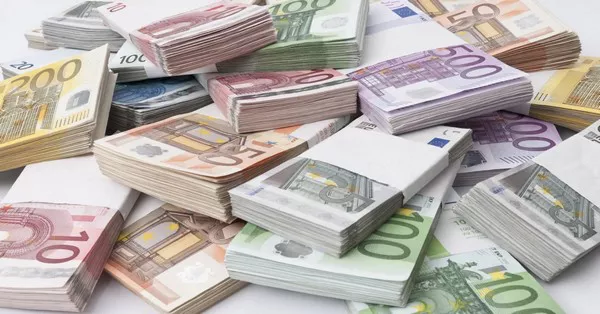The Euro, the official currency of the Eurozone, has been subject to fluctuations in recent times, sparking concerns among investors and economists alike. The question on everyone’s mind is: How low can the Euro go? In this article, we will delve into the various factors contributing to the Euro’s decline and attempt to forecast its potential trajectory in the near future.
Economic Indicators
To understand the potential depths of the Euro’s decline, it’s crucial to analyze key economic indicators. GDP growth, inflation rates, and unemployment figures play a pivotal role in shaping a currency’s value. The Eurozone has faced economic challenges, with GDP growth rates below expectations and persistently high unemployment in certain member countries.
Inflation has been another area of concern. The European Central Bank (ECB) has consistently struggled to maintain its inflation target of around 2%. Persistent low inflation can lead to deflationary pressures, negatively impacting the Euro’s value.
Monetary Policy
The Euro’s fate is closely tied to the monetary policy decisions of the ECB. Historically, the ECB has implemented unconventional monetary policies, including negative interest rates and quantitative easing, to stimulate economic growth. However, these measures have also contributed to a weaker Euro.
In comparison, the U.S. Federal Reserve has pursued a more hawkish stance, raising interest rates to combat inflation. This policy divergence between the ECB and the Fed can exert downward pressure on the Euro against the U.S. dollar. If the ECB continues with accommodative policies while the Fed tightens, the Euro may face further depreciation.
Political Uncertainty
Political instability within the Eurozone has been a recurrent theme, impacting investor confidence and the Euro’s value. Brexit, for instance, has created uncertainties surrounding the future relationship between the European Union and the United Kingdom. Additionally, political tensions within the EU, particularly issues related to fiscal policy and structural reforms, have added to the Euro’s woes.
Moreover, the rise of populist movements in certain member countries has raised concerns about the commitment to the Eurozone project. Political uncertainty often leads to capital outflows, weakening the currency. As long as political instability persists, the Euro may struggle to regain strength.
Trade Imbalances
Trade imbalances among Eurozone member countries also contribute to the Euro’s vulnerabilities. Persistent trade surpluses in countries like Germany, coupled with deficits in others, create tensions within the currency union. A strong currency, as seen in the case of Germany, can hinder the competitiveness of other member countries.
Trade tensions with major trading partners, such as the United States and China, further complicate matters. Tariffs and trade disputes can disrupt economic activity and negatively impact the Euro. As global trade dynamics evolve, the Euro’s value will be influenced by the outcomes of these negotiations.
Global Economic Conditions
The Euro is not immune to broader global economic conditions. External factors, such as the economic performance of major trading partners and geopolitical events, can significantly impact the Euro’s value. The COVID-19 pandemic, for example, led to a global economic downturn, affecting the Eurozone as well.
If the global economic recovery falters or faces headwinds, the Euro could experience further downward pressure. Global events, including geopolitical tensions and natural disasters, can create uncertainties that drive investors away from the Euro, seeking refuge in more stable currencies.
See Also Why Euro Price Is Falling?
Technological Advancements and Cryptocurrencies
The advent of technological advancements, particularly the rise of cryptocurrencies, poses another challenge to traditional currencies like the Euro. While central banks worldwide are exploring the concept of digital currencies, the decentralized nature of cryptocurrencies introduces a new dynamic to the currency landscape.
Bitcoin and other cryptocurrencies have gained popularity as alternative stores of value. If these digital assets continue to grow in acceptance and usage, they may pose a threat to traditional fiat currencies, including the Euro. Investors seeking decentralization and security might divert funds away from traditional currencies, contributing to their depreciation.
Conclusion
In conclusion, the Euro’s decline is influenced by a complex interplay of economic, political, and global factors. While it is challenging to predict precisely how low the Euro can go, the ongoing challenges within the Eurozone, coupled with global economic uncertainties, suggest that the currency may face further headwinds.
To mitigate these risks, policymakers within the Eurozone must address structural issues, enhance economic resilience,and work towards a more coordinated and stable monetary and fiscal framework. Additionally, fostering political stability and addressing trade imbalances will be crucial in restoring investor confidence in the Euro.
Investors and market participants should closely monitor economic indicators, central bank policies, and geopolitical developments to make informed decisions. As the Euro’s fate is intricately tied to a multitude of factors, a comprehensive understanding of these dynamics is essential for navigating the ever-changing currency landscape.


